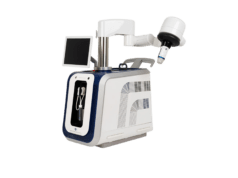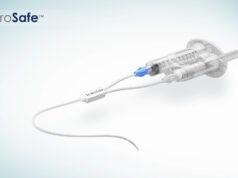
Long-term evaluation of superficial venous reflux below the knee, in patients who received invasive treatment for varicose veins, has found that both radiofrequency ablation (RFA) and open surgery achieve “acceptable and comparable results” in the elimination of reflux in the great saphenous vein (GSV). The retrospective cohort study was presented at the annual meeting of the American Vein and Lymphatic Society (AVLS; 7-10 November 2019, Phoenix, USA).
“Varicose veins are a widespread problem,” said Beatrix Cucuruz (Goethe University Hospital, Frankfurt, Germany; Center for Vascular Disease, Nuremberg, Germany), who discussed the findings of the investigation. The speaker underlined that up to 30% of the population have varicose veins which should be treated, with 70% of primary varicose veins showing familiarly aggregation, and added that “paresthesia is reported in 4-20% of patients after stripping of the GSV”.
Regarding the treatment options available, Cucuruz explained that “in our institute, we mainly use RFA or open varicose vein surgeries,” though other ablation techniques, such as endovenous laser ablation (EVLA), mechanochemical ablation (MOCA) and chemical ablation, as well as foam sclerotherapy, can be utilised.
According to Cucuruz, the aim of the study was to examine whether or not postoperative paresthesia can be reduced with RFA, and if there is a durable occlusion of the veins following this procedure. Moreover, the study sought to determine the incidence of recurrent varicose veins and whether there are any changes of the remaining GSV at the thigh after RFA.
“We looked for patients who were treated for varicose veins between January 2007 and December 2008,” said the speaker who, outlining the study methods, commented that “all of these persons presented with incompetence of the GSV down to the ankle”. RFA was conducted using the ClosureFast catheter from Medtronic, and all patients wore compression stocking for six weeks following their treatment.
The data collected showed that 60 patients were treated during this period with RFA, while 352 underwent open surgery. Twenty-four of those 352 patients were treated with stripping of the GSV above the knee, instead of the entire vein. In terms of the demographics analysed in each of the two groups (RFA and open surgery), there was no significant difference in terms of age or previous heart disease. However, Cucuruz noted that the number of patients in the RFA group who had a history of deep vein thrombosis (DVT) was significantly higher compared to the open surgery cohort (12/60 vs. 4/352, p=0.001).
With a technical success rate of 100%, results of the study showed that following RFA, just one patient out of 60 (2%) experienced paresthesia during the postoperative course. Out of those who underwent open surgery with stripping of the entire GSV, 8% developed postoperative paresthesia (27 out of 328), while none of the 24 in whom the GSV was stripped only above the knee experienced this.
Turning her attention to the long-term follow-up of these patients, Cucuruz revealed that the recanalisation rate after RFA was 12% (seven out of 60); the recurrence rate was 15% (nine out of 60) following this procedure. By comparison, the recurrence rate following open surgery on the entire GSV was 12% (40 out of 328), which was higher than the 8.3% recurrence rate (two out of 24) for open surgery patients who underwent stripping above the knee.
“Looking at the follow-up for patients with remaining GSV at the calf (60 patients who had undergone RFA, plus 24 patients who underwent stripping above the knee), 98% did not show any reflux (82 out of 84)” explained Cucuruz. “Also, only 2 out of 82 (2%) patients show progression of GSV incompetence with indication for reintervention”.
Cucuruz concluded: “In almost all patients, reflux of the GSV below the knee was abolished. In addition, there was a higher rate of postoperative paresthesia in patients with stripping of the entire GSV, as you would expect. The number of patients lost to follow-up was a limitation of the study though, as this was a lot more common in the group who underwent open surgery for varicose veins.”












